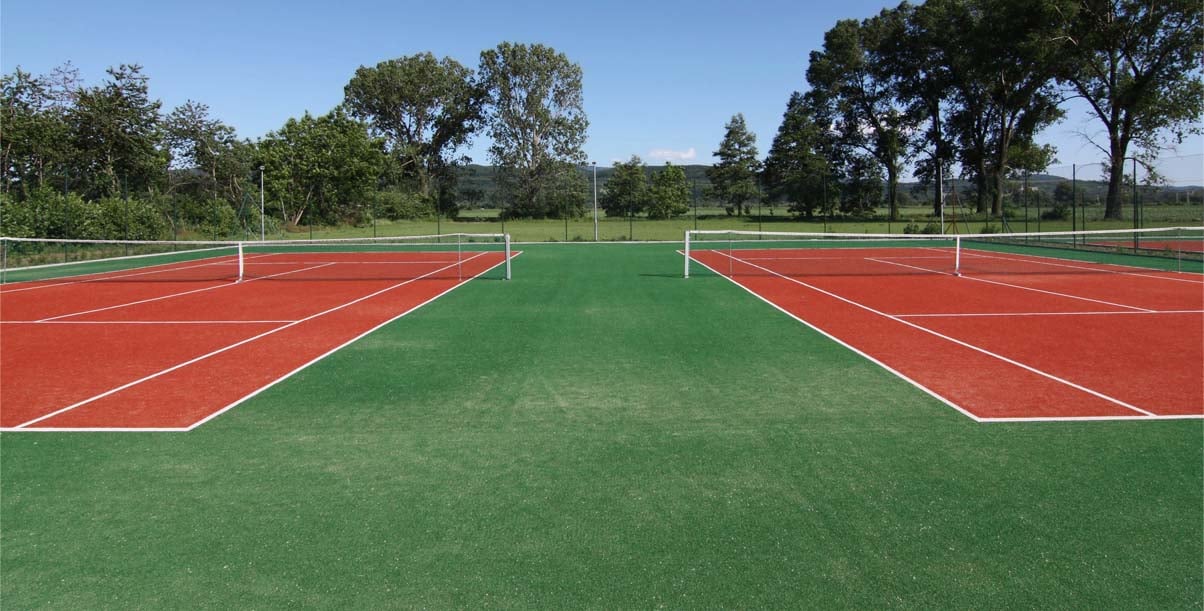Tennis, originally a hand-held game with roots dating back to medieval France, was originally played by hand. Known then as “jeu de paume,” this game eventually laid the foundations for modern tennis with the introduction of the tennis racket.
Its closest modern form began in England in the 19th century and quickly gained immense popularity. A sport that can be played both individually and in doubles, tennis combines strategy and physical endurance. With its rules evolving and changing over many years, tennis has become a sport of great international interest.
Since its inclusion as an Olympic sport in 1988, tennis has begun to appeal to a wider audience and has gained a large worldwide following. Athletes from all over the world gather in major tournaments to showcase their talents and compete on the international stage. This global appeal has transformed tennis from a mere sport into a cultural and social phenomenon.
What is Tennis?
When the question “What is tennis ?” comes to mind, the basic principles and gameplay of this sport often come to mind. Tennis is a game played by two players or teams of two. The goal is to send the ball over the net to the opposite court and prevent the opponent from returning it. Tennis is a strategic game that develops physical and mental skills.
Played with two tennis rackets, this sport requires speed, power, and tactical thinking. Players strive to accurately return the ball to the opponent’s court and prevent them from missing it. Tennis courts can be played on a variety of surfaces, and each surface requires a different style of play.
The rules of the game may seem simple, but mastering it takes time and practice. It’s also worth knowing that the word “tennis” has its origins in the Anglo-French word “tenetz” (to wait and catch). Isn’t the etymology alone sufficient to describe the style of the game?
When Was Tennis Invented?
The invention of tennis actually dates back to ancient times. It is known that sports similar to tennis existed thousands of years ago in ancient Egypt, the Persian Empire, and the Greek civilizations. In these ancient civilizations, the sport was played with hands and was part of activities known as ball games. Therefore, the origins of tennis can be traced back to these ancient civilizations.
However, the more definitive origins of modern tennis emerged in Europe in the 12th century. English and French noblemen began playing a similar sport in indoor sports halls, separated by a net. It was played using equipment similar to a tennis racket , and over time, the foundations of today’s tennis were laid.
The involvement of English and French noblemen in the sport played a significant role in the popularization of tennis. This process was a significant turning point in the evolution of tennis into the modern form we know today.
How to Play Tennis?

Tennis is played on a flat rectangular court by two players or two teams. Players hit the ball with their tennis rackets, aiming to send it over the net in the center of the court and into the opponent’s court. The main objective of the game is to prevent the opponent from returning the ball. If the ball bounces more than twice in the opponent’s court, the point is awarded to the kicker. In other words, the ball must return to the opponent’s court without bouncing twice.
If the ball hits the outside of the net, a point is scored on the receiving side. This requires players to keep the ball in line correctly. If the ball hits the net and lands on the same side, a point is scored on the opposite side. This requires players to avoid hitting the net.
Another important rule applies when serving. If the ball hits the net during the serve, the serve is replayed. This means the serve must be executed properly to ensure a fair start. Tennis is a sport where both physical and mental strategies are important, and understanding the rules correctly is crucial for a smooth game.
What are the Rules of the Game of Tennis?
Because tennis is such a dynamic sport, following the intense matches can be challenging for spectators. The game’s complex scoring system can also be confusing. Understanding the principles of the game is crucial for spectators. The rules of tennis ensure a fair and systematic competition. It is crucial for all athletes, whether amateur or professional, to adhere to these rules for a healthy competition.
- Play continues when the ball touches the boundary line. However, if the ball completely crosses the boundary line, the play is void and a score is awarded to the opposing team.
- A tennis match begins with one opponent’s kickoff. The first shot, determined by a draw, is fired from outside the boundary line at the back of the court. With this kickoff, the ball is expected to land in the designated area in the opposite corner.
- If the ball touches the player’s body before being hit with the racket, the opponent is deemed to have scored.
- If the ball touches the top of the net and lands in the opponent’s court during the serve, it’s considered a let, and the serve is restarted. However, if the ball hits the net and goes out of court during the serve, it’s considered a mishit, and the point is lost.
- At the end of each set’s odd-numbered games, the opponents rotate positions on the court. This rotation ensures that the competition conditions are equal for both competitors.
- If the ball does not touch the ground before it meets the net, the player who last touched it loses the point.
- The server must toss the ball upward and return it to the designated area in the opposite corner of the court. Players are given two attempts to serve. Failure to serve legally on either attempt is considered a double fault, and the player loses a point.
Since the balls get damaged when they hit, they need to be replaced with new ones after a certain period of time.
What are the dimensions of a tennis court?

Tennis is played on a rectangular court, called a tennis court. Whether indoor or outdoor, the court must be the same size. The court’s dimensions are determined by the International Tennis Federation (ITF). According to these official measurements, a tennis court must be 23.77 meters (m) long and 10.97 meters wide. These dimensions are crucial for ensuring the court’s playing standards and fair competition.
The ITF also determines the middle height of the net, which divides the court into two, at 0.914 m. This height is critical for ensuring fluidity and balance in play. The posts supporting the net must also be 1.07 m high. This provides the necessary tension and balance to the net, ensuring stability during play. Accurate implementation of all these measurements ensures that tennis matches meet international standards and allows athletes to perform at their best.
Some people discussing tennis may prefer to use the term “court tennis.” You might wonder what this term means. Some might prefer this name to refer to the venue where the game is played. But in reality, the term “court tennis” is simply another name for aristocratic tennis, known as “court tennis” in the US and “royal tennis” in Australia. Aristocratic tennis is considered the forerunner of the modern tennis we play today. For more information, please visit our blog post titled “Tennis Court Dimensions .”
How Many Points Does a Set End in Tennis?
In tennis, a set ends when one side wins six games. However, to win the set, they must be ahead by at least two games. For example, if the score is 6-5, the score must be 7-5 to win the set. If the score is 6-6, a tie-break game is played. In this case, a specific game format is used to win the tie-break set, and the player who reaches a difference of at least two points wins. A tie-break is an exciting game designed to ensure a quick conclusion to the set.
How Many Minutes Does a Tennis Match Last?
The duration of a tennis match can vary depending on many factors. In a best-of-three match, the player who wins two sets wins, and in a best-of-five match, the player who wins three sets wins. However, the length of a match varies depending on the players’ playing style and strategies, the surface on which the match is played, and the tournament rules.
Rest periods between sets, such as those for players to change their tennis clothes and medical breaks when necessary, also extend the total duration. Therefore, it’s difficult to predict when a tennis match will end in a specific timeframe. For more information, you can review our blog post titled “How long is tennis?”
How Do Numbers Progress in Tennis?
The distribution of points in tennis is quite interesting. With each game, the points earned increase sequentially, starting at 15, then 30, then 40. The player who wins points first scores 15, then 30, then 40. If both players win three points in the same game, the score becomes 40-40. If a tie occurs, the player who wins the fourth point wins the game. If the game is still tied, the “advantage” phase begins after the fourth point. This system is a key factor in increasing the excitement of tennis matches.
What are Tennis Terms?
Rally : Mutual shots until a point is scored.
Volley: A shot made while the ball is in the air.
Ace: A point is won directly from the serve without being touched by the opponent.
Backhand : A stroke that can be made with one or both hands, with the palm facing the body and the outside of the hand facing the opponent, aimed at the ball on the opposite side of the dominant hand.
Forehand : A stroke made with the palm of the dominant hand holding the racket facing the opponent’s side, with the ball coming towards the side of this hand.
Match point: The score a team would win the match by if they won the current number of points.
Crosscourt: A player throws the ball diagonally to the opposite corner of the court.
Break Point: This refers to situations where the server is in danger of losing the game and the opponent’s chance of winning the game increases.
Backspin: A type of shot that causes the ball to spin backwards.
Tweener: A kick made by an athlete between the legs in certain situations.
Tie-break: The system used to break the balance when the sets are tied at 6-6.
Line judge: The person who informs the referee whether the ball bounces inside or outside the line under his responsibility.



